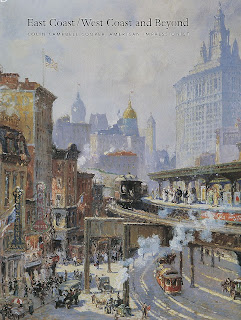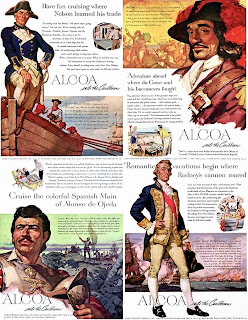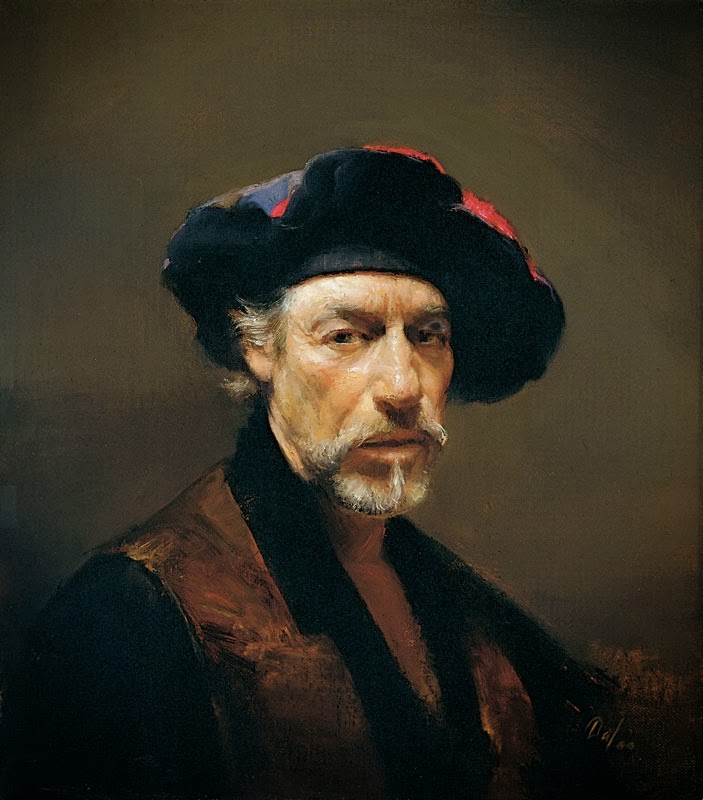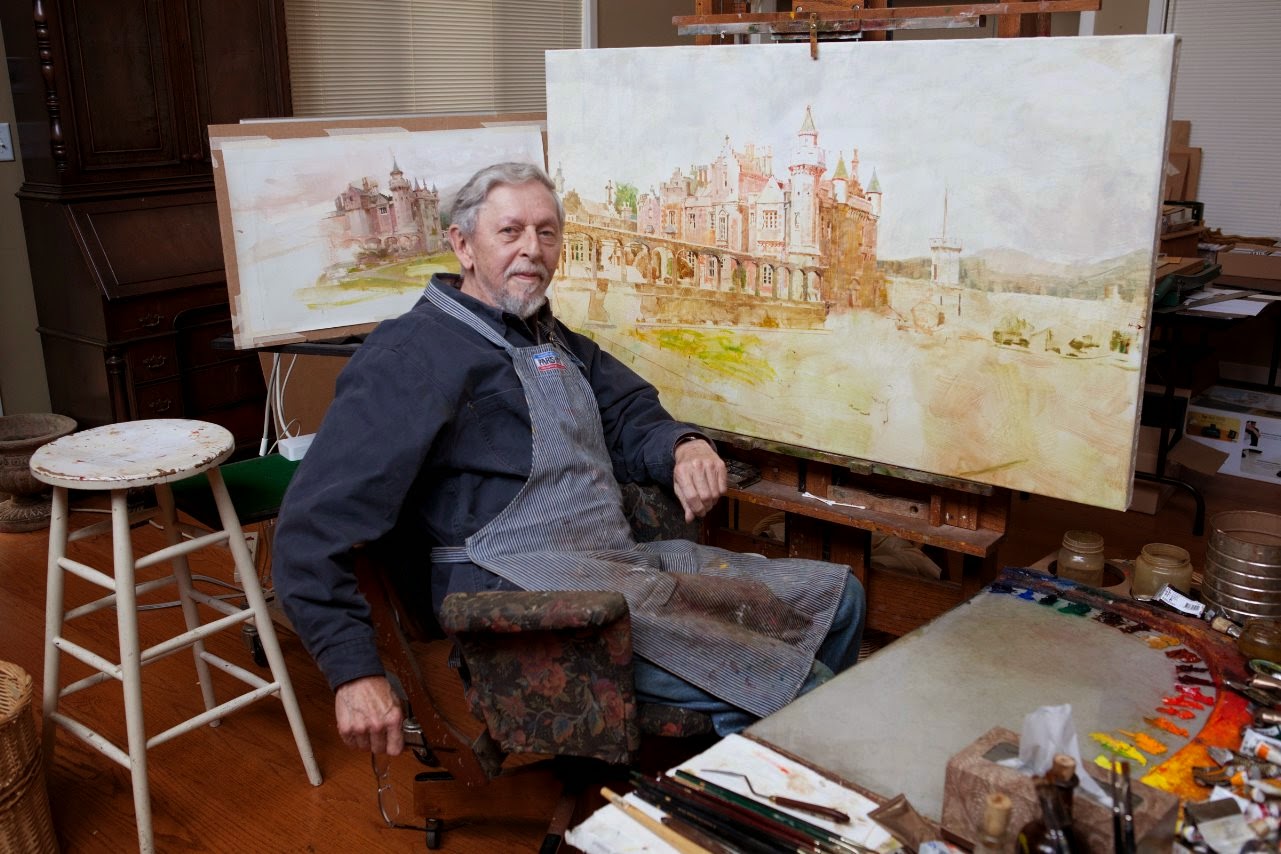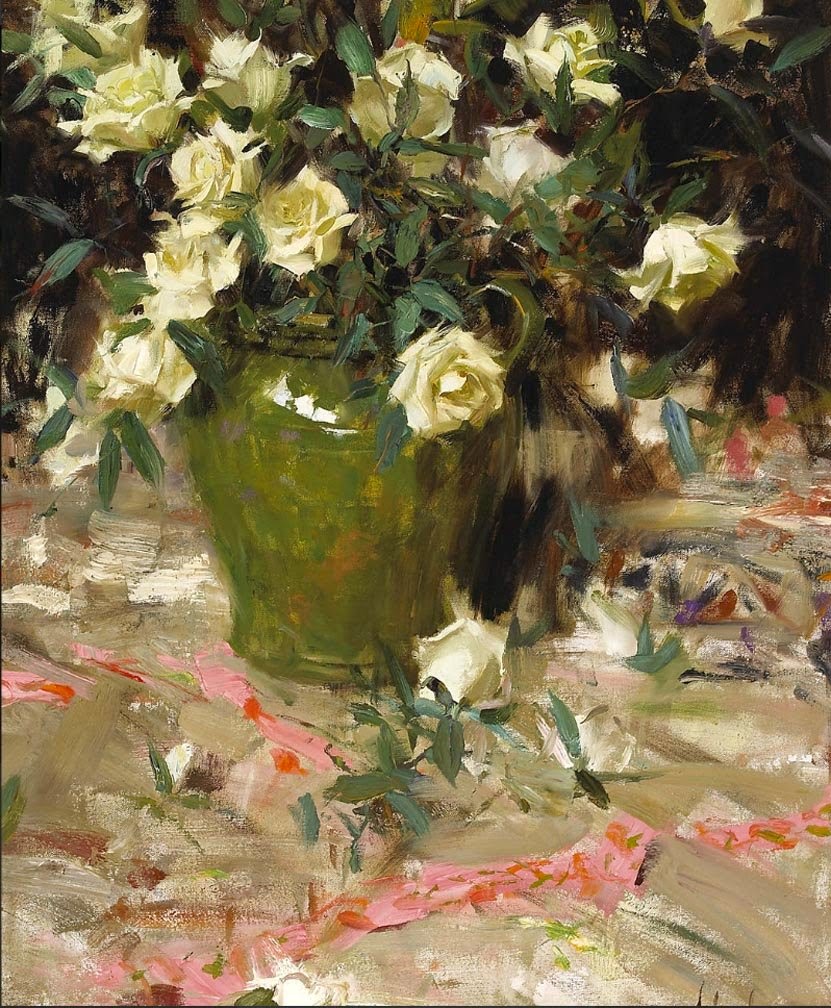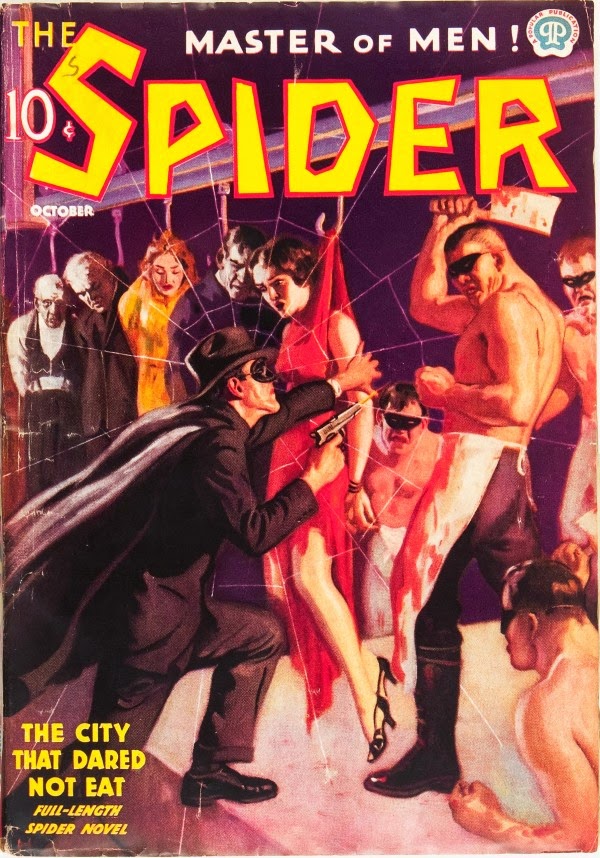Marche aux fleurs
From artistsandart.com
Place Vendome
From painterlog.com
Antoine Blanchard (Marcel Masson) was born in France on November 15, 1910 in a small village near the banks of the Loire. He was the eldest of three children and his father, a carver, managed a small carpentry and furniture shop. Antoine would watch his father hand carve the furniture and began to display an artistic flair early in life - in an effort to promote this talent, his parents sent him to Blois for drawing lessons.
He continued his training in Rennes at the Ecole des Beaux-Arts where he studied sculpture and drawing. Upon completion of his studies, he was awarded the schools highest award: Le Prix du Ministre. Many of the subjects and scenes he portrayed were taken from images he collected of Paris during the 1890's and he would often work on paintings for days or months before he finally felt they were complete. A.P. Larde comments in his book Antoine Blanchard, His Life His Work that he has always spent much time on his work. This explains why his production has always been rather limited, unlike the hurried and multiple proliferations of some modern artists… Delicate touches of luminous and shimmering tones produce a marvelous impression of harmony, brightness and light. Alternate shadings and lights, sensitive and mellow blending allow the artist to attain a hardly-ever reached degree of grace, of radiant and glimmering freshness. (antoineblanchard.org)
Champs-Élysées, Arc de Triomphe
Provenance
Private Collection, Michigan
Rehs Galleries, Inc., New York City
Private Collection, Florida
From antoineblanchard.org
Arc de Triomphe
Provenance Rehs Galleries, Inc., New York City
From antoineblanchard.org
Champs-Élysées, Winter
Provenance
Private collection, Springfield, Florida
Rehs Galleries Inc., New York City, 2003
Private collection, Texas, 2004
From antoineblanchard.org
Antoine Blanchard was not an outgoing painter like his contemporary Marcel Dyf. It was not his practice to attend openings and exhibitions and charm his audience. Instead, he labored relentlessly in his studio, creating Parisian scenes that were inspired by artists like Edouard Cortes (1884-1969) and E. Galien Laloue but which relied on his own unique palette and fluid brushwork. His romanticized scenes of fin-de-siècle Paris were not sold by the artist directly to galleries, but to agents, essentially art brokers, who then sent them to galleries in Europe, the United Kingdom and, especially, the United States. And, Blanchard dealt with a number of dealers, because cash on the barrel counted more than good intentions. He came of age in an era when dealers bought and owned their inventory. Galleries purchased the works of contemporary painters instead of taking work on consignment as is customary today. So, Blanchard was more than willing to sell his paintings while knowing that his broker would mark them up when he sold them to the gallery, and then that the gallery had to make their profit as well.
In the 1960s, when Blanchards first became popular places like New York, Los Angeles and Texas, it took a lot more effort and a considerable investment for a broker to develop a network of dealers in the United States. So the artist set his price and was usually content to work in his studio and allow others to do the traveling, marketing and promotion that will always be part of the art business. Once a European or American agent purchased a group of paintings from Blanchard, he would then in turn sell them to galleries in the United States, usually ones that he worked with and sold the work of other artists to. A gallery bought the Blanchard paintings outright, usually sending a deposit and then the balance once the paintings arrived. In the 1950s through the 1970s, most of these agents had a large inventory and they usually extended some credit to their dealers to encourage purchases. The Blanchards were normally sent to the United States rolled in tubes. It was quicker, less expensive and safer to send the paintings rolled in a sturdy tube than it was to stretch them in Europe, pack them in boxes and send them off on a long voyage. Now, dealers of the 1950s and 1960s were usually more practical than those of today, some of whom have never learned to stretch or frame a painting. So it was second nature for them to stretch the paintings that came from Europe themselves. And, it is the fact that the paintings were stretched here in the States – the land of the inch and foot – that accounts for the slight variation in sizes that is found in authentic Blanchards on the American market.
Blanchard painted his work to fit standard size French stretcher bars. In the early years, tourists often purchased Blanchard’s paintings in Paris. His smaller works could be taken home in a suitcase. These would mostly have been framed in France. As an export market developed, however, he sent his paintings to his agent – who could be in France or Austria for example – who then shipped them onto dealers in the United States or the U.K. These paintings were painted roughly to the size of 35 x 45cm or 45 x 55cm, which works out to be precisely 13.7” x 17.7” and 17.7” x 21.65” respectively. These are anything but standard sizes on our market. So, when the dealers stretched the paintings here in the United States, they had to go to the expense of ordering or mitering “custom” stretcher bars.
(antoineblanchard.wordpress.com)
Antoine Blanchard was often introduced to collectors as the foremost artist of Parisian street scenes of his day. Like his predecessors, the French masters Galien-Laloue, Cortes, Loir and Utrillo, Blanchard has made an impact on contemporary art. Blanchard was encouraged at a young age to enter the arts. His parents first sent him as a young boy to an art school in Blois, and then relocated the entire family to Rennes in Brittany so that young Antoine could study there at the Ecole des Beaux-Arts. Three years later, in 1932, the young artist moved to Paris in order to Study at its world famous Ecole des Beaux-Arts. Upon completion of his studies, Blanchard was awarded the Prix de Rome, an honor rarely given to an artist of his young age. The following years were spent in Paris recording scenes of the city’s bustling streets characterized by glowing street lamps, flower vendors pushing carts full of brilliantly-colored bouquets and fashionable pedestrians crowding the sidewalks.
The artist, whose works were an immediate success, favored the styles of Eugene Galien-Laloue and Edouard Cortes. Indeed, critics have compared his works to the traditional Paris street scenes painted in the late 1800’s and early 1900’s in both style and subject matter. It is, however, important to note that Blanchard’s pieces are more delicate in brushwork, more generous in color and more alive in movement than those of his predecessors. Combining his years of classical training with innovative techniques of the 20th century, Blanchard was a trendsetter. The artist’s works executed throughout his fifty year long career are witness to his gradual development in technique, moving from heavy and dark tones similar to those of the old masters, to a new style using numerous strokes of color lightly applied to the canvas. With immense imagination, profound understanding of color and light and accuracy in architectural detail, Blanchard has continually delighted the art world with his compositions.
(renoirinc.com)
Le Café de la Paix
Provenance
Private collection, Nebraska
Rehs Galleries, Inc., New York City
Private collection
From renoirinc.com
In 1979, his large canvas Le Café de la Paix won the Premier Grand Prix at the first art competition held in Paris’ famed Café de la Paix on the bustling Boulevard des Capucines. That work is now part of a major collection in Salt Lake City, Utah. Spanning five decades of ceaseless hours spent in front of the easel, Blanchard’s career was fired by a pressing goal to continually excel. This strict discipline did not, however, harden his work – it proved only to refine it. Along with Utrillo, Loir, Guys, Galien-Laloue and Cortes, Antoine Blanchard is one of the great impressionists of modern times.
(renoirinc.com)
Theatre du Chatelet
Place de la Madeleine, Hiver
Place de la Republic
Images from wikipaintings.org
Blanchard initially modeled Edouard Cortes, as a Belle Epoque painter with classical art training. Blanchard’s own style developed, using a lighter, and brighter palette of colors, and a brushstroke which was light, with small strokes, resembling calligraphy. Blanchard’s excellent use of perspective, softer pastel tones, and lighter brush touch gave his paintings a more decorative look, recalling previous impressionist artists.
Blanchard viewed Paris in a historical rear view mirror, adding his own romance. He initially collected sepia postcards of Paris, which reflected life of peace, prosperity, and beauty in Paris, as opposed to the time after World War I, in which he lived.
Subjects of his paintings are the nobility chateaus of Loire Valley, the Notre Dame Cathedral, the Place Concorde the Opera, and the Arc de Triomphe, and many of the boulevards in Paris. His paintings such as Boulevard De La Madeleine, and Les Grands Boulevards La Porte St Denis let the viewer enjoy seeing horse-drawn carriages, fashionably-dressed ladies and gents, and sidewalk cafes, depicting Paris throughout the seasons.
Blanchard never sought fame as an artist, and was content to work in his studio, until his death in 1988. Blanchard’s hundreds of paintings allow the viewer to stroll along the Paris streets, window shop along the boulevards, and enjoy the beautiful scenic past of Paris.
(totallyhistory.com)














